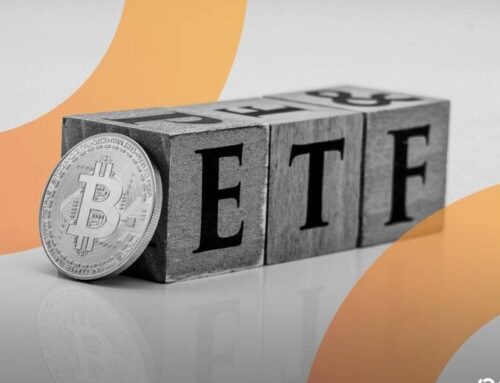Assessing OBBBA’s Impacts For U.S. Renewable Power Developers
November 4, 2025
Navigating a maelstrom
The passage of the One Big Beautiful Bill Act
(“OBBBA”) in July 2025 marked a significant policy
reversal for renewable energy—and only the start of a period
of industry upheaval. Last month, the Treasury Department’s
guidance on the OBBBA’s implementation further tightened the
requirements to qualify for tax credits, most notably eliminating
the “safe harbor” rule that allowed 5% of solar and wind
project spending to stand in lieu of the start of physical
construction. For all of us closely watching the trajectory of
policy over the last year, the potential risks of the spring have
now given way to the hard realities of the fall. This is no longer
business as usual.
After three years of blue-sky expectations and growing project
pipelines following the 2022 passage of the Inflation Reduction Act
(“IRA”), the U.S. renewable power industry must learn to
operate without the certainty of policy tailwinds, and against the
headwinds of uncertain new restrictions.
With utility-scale solar and wind tax credits set to become
constrained over the next several years, now on an accelerated
timeline, developers must urgently reassess their project pipelines
and suspend new origination activities. The focus has shifted to
accelerating viable projects already close to construction, while
mothballing or canceling those that no longer make economic sense
under the current rules. Larger players may see an opportunity to
shift from origination to acquisitions—bringing in mature
projects that should qualify for incentives. Smaller players may
benefit from being nimble, speeding up development to meet
qualification milestones – if they can secure financing and meet
new Foreign Entity of Concern (“FEOC”) content
requirements. Considering OBBBA’s changes, it has become
essential to revisit project economics and investment strategy.
Guidance from the U.S. Treasury and IRS in August established
the Physical Work Test as the exclusive test for
beginning-of-construction, but uncertainty remains, including the
potential for further changes in law and guidance, along with
potential uncertainty for securing permits.
The bright spot remains the seemingly insatiable demand for
electricity, most notably driven by AI data centers. Capitalizing
on this opportunity and weathering this industry maelstrom will
require developers to undertake a careful and structured
reconsideration of all strategies and processes.

The implications of tax credits on project economics
When the Inflation Reduction Act was introduced, solar energy
was expected to produce more electricity per year by 2031 than all
US coal-fired power plants in 2022. Renewable developers built
project investment cases around the expectation of long-term IRA
tax credits, and those incentives resulted in lower Power Purchase
Agreement (“PPA”) prices. As a result, 2023 and 2024 saw
unprecedented solar, wind, and storage additions, with many
developers extending robust project pipelines to the end of the
decade.
Going forward, the OBBBA has fundamentally rewritten the
economics of renewable energy development, with solar and wind
projects facing a cliff of this support. Now, to be eligible for
100% federal tax credits, projects must be placed in service before
December 31, 2027, or they must begin construction within a year of
the OBBBA’s enactment. Projects that were previously projected
to qualify for tax credits could see drastically lower returns and
may not attract financing, especially if there is concern that
construction might not begin before these deadlines. These projects
and their developers face a chicken-or-the-egg dilemma: they need
financing, which depends on tax credits, but tax credits depend on
siting, permitting, and actual construction, all of which require
funding.
That bracing reality requires a re-evaluation of each
project’s investment decision, as well as a holistic look at
project pipelines to identify where to fast-forward, where to
pause, and where to stop altogether. In effect, developers face a
binary decision: cancel projects, or accelerate them to capture the
tax credit before becoming ineligible? For larger organizations
with numerous projects spread across geographies, often each with
its own investors and off-takers, the range of options
expands—creating a complex quandary.
In rare cases, a technological pivot may also be an option. The
OBBBA’s preference of some generation types over others
(notably storage, nuclear, and geothermal), raises the possibility
of leveraging sunk permitting costs towards alternative
technologies. Some companies may be able to seek diversity in areas
still backed by the bill—like hydrogen, biofuels, and carbon
capture—to hedge against policy changes. But the challenge of
continuing with business as usual is significant. Already, more
than $20 billion in clean energy investments were cancelled in the
first half of 2025.
Navigating concerns over Foreign Entities of Concern
(FEOC)
The FEOC provision in the OBBBA creates an additional layer of
complication. It fundamentally reshapes equipment sourcing
strategies, forcing renewables developers to both adapt to new
suppliers and overhaul their oversight processes. While the
industry broadly expected these rules to be relaxed from the
initial House bill, final passage and the Treasury guidelines added
stringent new requirements barring clean energy projects from
claiming tax credits if they are owned, controlled, or materially
supplied by entities linked to certain nations (notably China,
Russia, Iran, or North Korea). This last-minute tack demonstrated
resolve for cutting off supply chains for those nations—it
also guaranteed near-term project disruption for developers.
Navigating FEOC concerns will not be easy. The provision
operates through three mechanisms:
- Ownership-based exclusion, which makes projects owned by a
Specified Foreign Entity or Foreign-Influenced Entity ineligible
starting in 2026. - Effective control rules, where licensing or contractual
agreements that allow FEOC influence may disqualify projects, even
retroactively. - Material sourcing constraints require FEOC-sourced component
costs to remain below decreasing thresholds.
The implications of these changes will ripple through project
economics. Developers will have to shift to domestic or non-FEOC
sources (potentially increasing costs). They will need to build new
processes for ongoing transparency, and dramatically increase due
diligence requirements. Ownership structures will need to be
audited, contracts reviewed, and supply chains mapped—all
while racing against tight deadlines that do not necessarily align
with the tax changes. To qualify for credits under FEOC provisions,
projects must begin construction by July 4, 2026, or be placed in
service by December 31, 2027.
In many cases, developers will ultimately need to restructure
ownership, while working within a reduced pool of credit purchasers
(as FEOC-linked buyers are prohibited). The need is immediate and
critical for developers to assess their exposure levels, enhance
due diligence, and explore all potential sourcing alternatives. It
is the regulatory equivalent of completing a puzzle in the middle
of a hurricane.
Organizational change is inevitable
Given the magnitude of uncertainty that the OBBBA has introduced
into the industry, a fundamental shift in the growth calculus of
renewable energy firms is inevitable. In some lights, this is a
swing of the pendulum following the rapid growth of the last
half-decade. Many renewable companies have expanded through
fragmented acquisitions, resulting in compounded overhead and
administrative costs with duplicated functions and inconsistent
systems. As this moment of industry turmoil accelerates, firms will
be forced to confront these inefficiencies and rethink how SG&A
expenses are structured and scaled.
M&A activity will increase
M&A activity may be a faster and more cost-effective path
through the uncertainty. Rising costs from tariffs, labor
inflation, and interconnection delays were already making organic
growth less viable. The project economics of the post-IRA world
increase that drag even further. For some firms, this could mean
opportunity. Given that a large share of solar and wind projects
depend on tax credits to remain competitive, disruptions are
triggering distress and asset sales, creating an environment for
consolidation. Private equity firms are actively pursuing renewable
platforms with strong pipelines and established grid access, adding
to the possibility of an M&A wave. For those who move
decisively, there are likely to be first-mover advantages.
Distressed or undervalued assets may also become opportunities
before the market resets.
Going forward
Much has been made of the AI data center boom and its associated
demand for electricity, but the industry had already been planning
for increasing load and shifting generation. No doubt the arrival
of the OBBBA era marks a shift away from the enthusiasm for
carbon-free solutions of the last several years. With fewer
renewable projects coming online (and increasing demand), there
will inevitably be a shift to keeping fossil fuel energy sources
longer—and, most likely, an increase in overall generation
prices. Given these factors, further shifts in the economic models
driving energy investment decisions may be on the horizon.
Canceling projects and rolling up pipelines requires a clear
understanding of the path from the specifics of the OBBBA to an
individual decision point.
The content of this article is intended to provide a general
guide to the subject matter. Specialist advice should be sought
about your specific circumstances.
Search
RECENT PRESS RELEASES
Related Post



